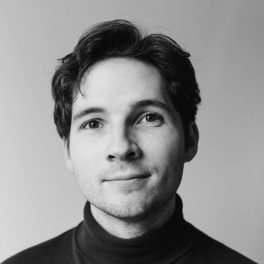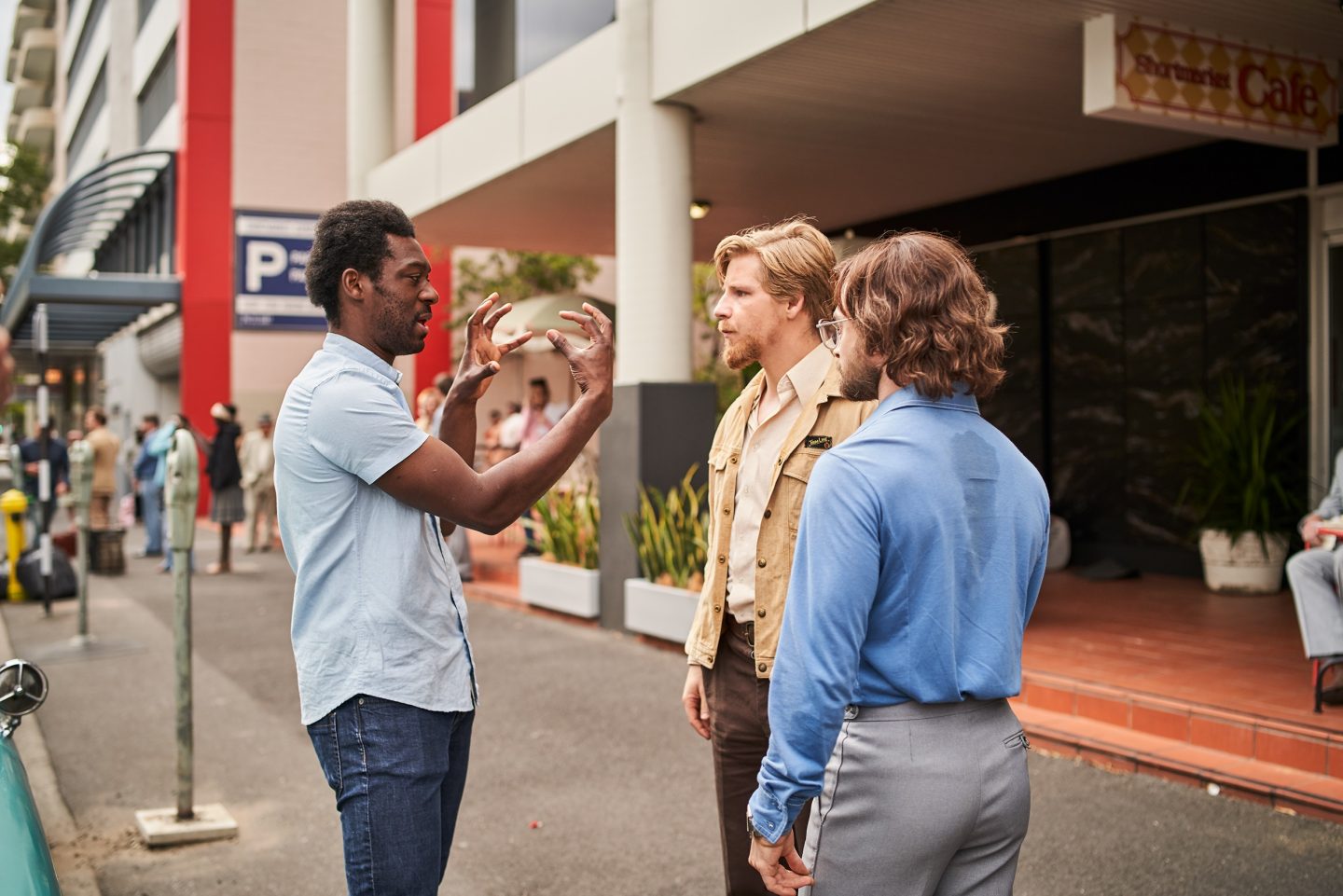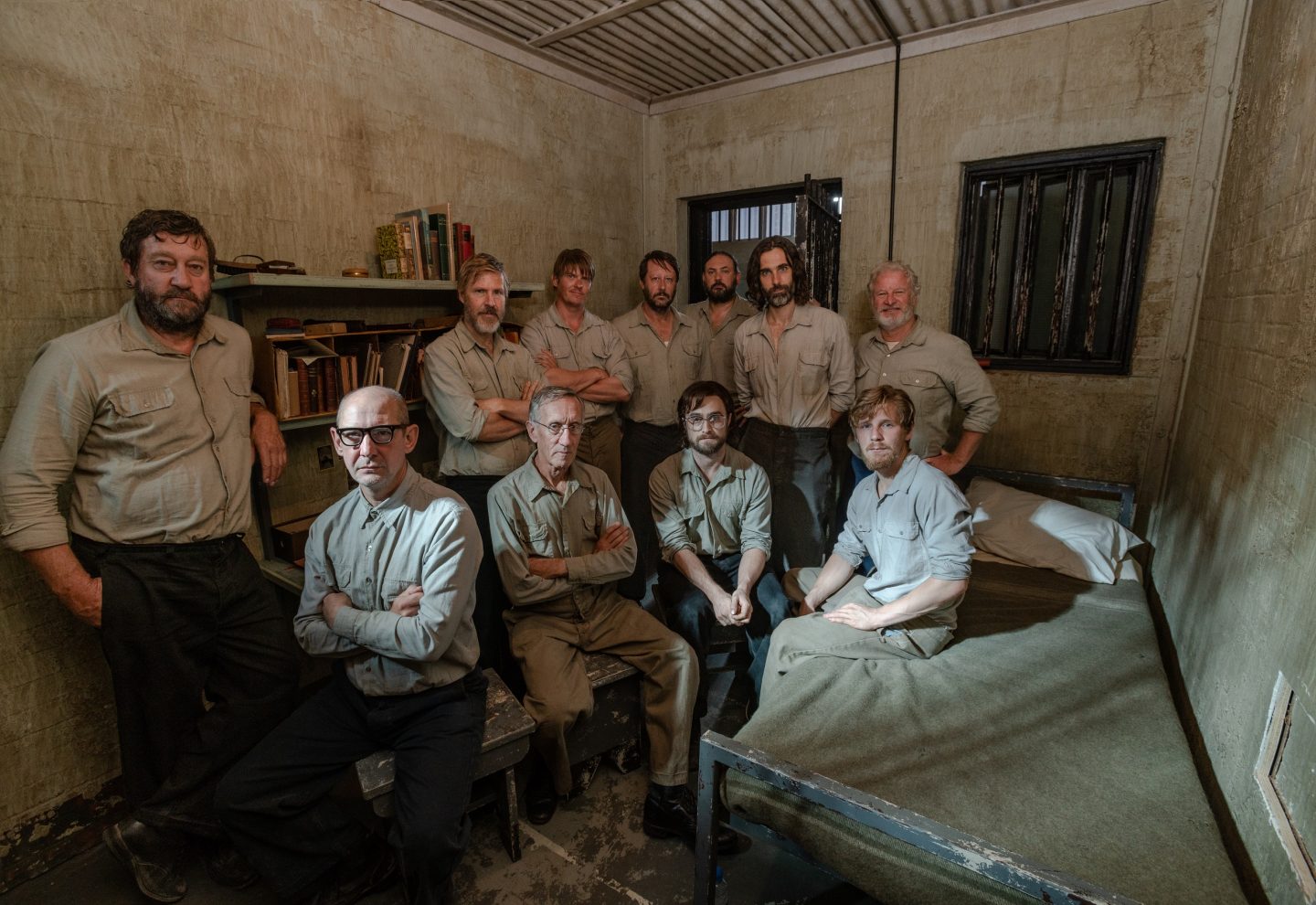
Walter Marsh
Walter is a writer and editor living on Kaurna Country.

In his Adelaide-shot debut feature Escape From Pretoria, the UK filmmaker recreates the 1979 jailbreak of White anti-apartheid activists in a story of endurance, allyship and political resistance.
“There’s a history of South African-set films being shot in South Australia; there’s a film called Breaker Morant with Edward Woodward that was set in 1901 South Africa – even though it was shot around Adelaide,” Francis Annan tells The Adelaide Review.
“The sun is high in the sky, it’s hot, there are jacaranda trees everywhere,” he says of the purple-flowering trees common to both Adelaide and Pretoria (a city colloquially referred to as ‘Jakarandastad’). “When you go further north, when the soil looks red, orange, it’s comparable to South Africa – all these little things that made South Australia useful.”
Unsurprisingly, it wasn’t always Annan’s plan to film his adaptation of real-life escapee Tim Jenkin’s memoir in Australia. But when local financing for a Cape Town shoot fell through at the eleventh hour, a fixed window of availability for star Daniel Radcliffe (he of Harry Potter fame) forced the production seek the closest available double for South Africa.
“Everything from post-colonial architecture to the same sorts of almost pre-Brutalist 60s and 70s architecture that was around in Cape Town, is also around parts of Adelaide. We had a photograph of a street in Cape Town in 1976 that we were using as a reference – we literally held my iPad up against Pirie street and were like ‘oh my gosh’ – the canopy, the colour, the brickwork, everything sort of checked out.”
Despite the city’s abundance of 19th and 20th century prison infrastructure, 60 to 70 per cent of interior scenes were shot in massive sets built inside the former Holden factory in Elizabeth – a necessity to meet the specific footprint required to carefully recreate Jenkin and Stephen Lee’s escape route.
Like the real Jenkin, Radcliffe spends much of the film in a cell painstakingly measuring, carving and troubleshooting a set of wooden keys over hundreds of days. While for some filmmakers this may not have felt particularly cinematic on paper (woodwork noir remains, to our knowledge, an under-explored genre), Annan was drawn to the intensity and methodical nature of Jenkin’s escape.
“See I do find it compelling,” he says. “I watch a lot of French cinema, a lot of Robert Bresson films like Pickpocket and A Man Escaped which were seminal references for this – they weren’t afraid to go down the rabbit hole as it were. These films are about the concept of tension not being through fast plots and cool music, but through staying with someone over time, and seeing them build up a body of work. Which makes it all the more high stakes if they get caught; it’s a different language, a different way of creating tension through the brooding, meticulous quality of their process.
“I felt it was important to hold onto that meticulous nature – and it pays more respect to the characters than if you glossed over those processes in a montage. I see it as necessary to understanding what it’s like to be in prison for 18 months.”
One such sequence, in which Radcliffe’s Jenkin must use chewing gum and a broomstick to retrieve a makeshift key that has fallen into the corridor outside his locked cell, just out of reach, is simple but effective. “It’s about intensity and tension through simplicity,” Annan says.
While the film’s rollout has been disrupted by the COVID-19 pandemic, after a digital release in May Adelaide audiences will be able to see the film in cinemas this weekend as part of an Adelaide Film Festival pop up season.

Against the backdrop of Black Lives Matter protests which are drawing renewed attention to structural racism and deaths in custody in countries like America, Britain and Australia, the film’s context of anti-apartheid resistance has a deeper resonance.
“As our eyes opened, the naked reality of apartheid stood before us,” a thickly-accented Radcliffe says in the film’s opening scene. “What we’d always accepted we now rejected. We didn’t want a life built on lies and indifference; we wanted to join the ongoing struggle. But unless we got up from our privileged White lives, our words were meaningless.”
While Annan was cautious of the film’s politics being “overly spoonfed”, preferring to show the characters “putting their money where their mouth is”, he says the diverse makeup of recent protests resonates with the allyship and solidarity displayed by the political prisoners of Pretoria.
“The film speaks to that idea that in order for [injustice] to be eradicated, it’s not just people from the oppressed group that have to speak out – other ethnic minorities and groups will have to say ‘this is not good, and it demeans all of us when we treat one group differently’. Even if the cost is imprisonment.”
And, while Hollywood’s tendency to foreground White characters in true-to-life films about racial injustice often invokes the much-critiqued ‘White saviour’ trope, for Annan the peculiarity of a film grounded in the injustices of racism, with an essentially all-White cast, is another striking illustration of the extremes of the apartheid system.
“Pretoria was a White-only prison; Blacks were only allowed to enter to clean,” he explains. “It’s horrific that even in prison they were still trying to maintain apartheid, but that’s how it was. What I found interesting about the story was that apartheid had offered up this mutated form of prison where you had Robben Island for African and Asian prisoners, and you had Pretoria which was for White political prisoners – even in prison they’re segregated.”
In such a context, the opportunity to escape and continue the fight where their marooned Black comrades cannot becomes a duty. Or, as one of the escapees says: “our inactivity is complicity”.

Walter is a writer and editor living on Kaurna Country.